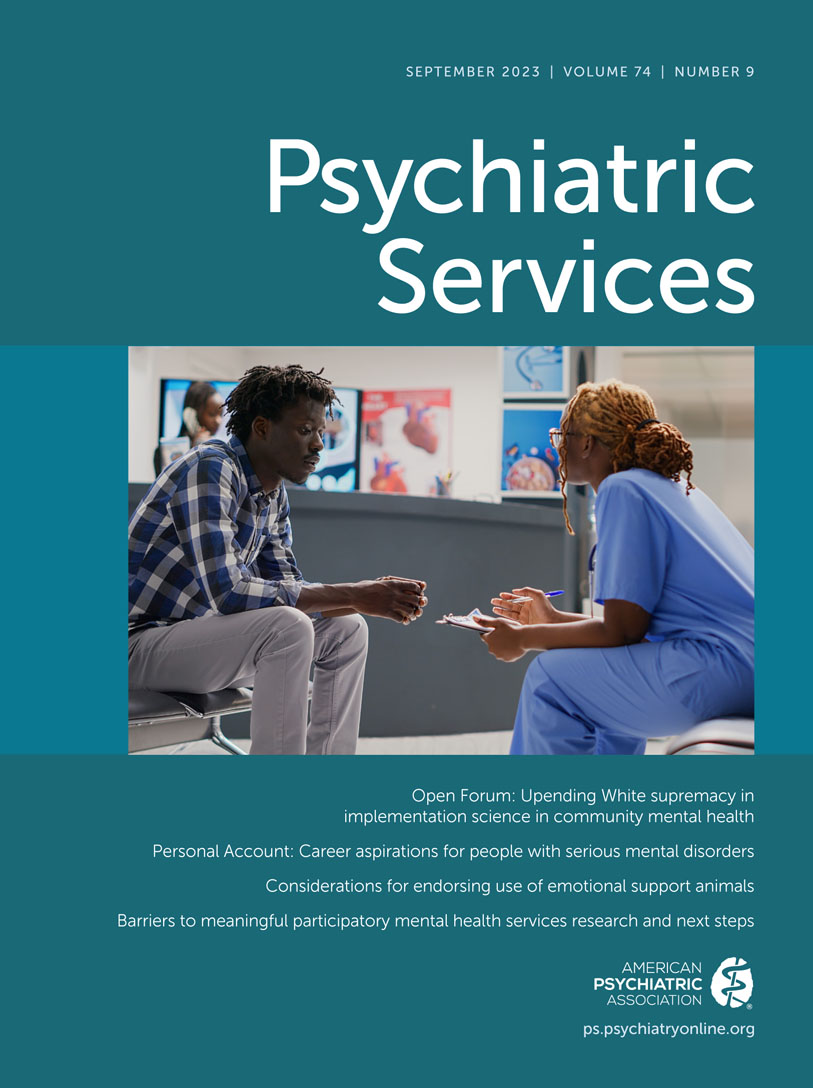Adoption of Best Practices in Behavioral Health Crisis Care by Mental Health Treatment Facilities
Abstract
Objective:
The authors aimed to examine adoption of behavioral health crisis care (BHCC) services included in the Substance Abuse and Mental Health Services Administration’s (SAMHSA’s) best practices guidelines.
Methods:
Secondary data from SAMHSA’s Behavioral Health Treatment Services Locator in 2022 were used. BHCC best practices were measured on a summated scale capturing whether a mental health treatment facility (N=9,385) adopted BHCC best practices, including provision of these services to all age groups: emergency psychiatric walk-in services, crisis intervention teams, onsite stabilization, mobile or offsite crisis responses, suicide prevention, and peer support. Descriptive statistics were used to examine organizational characteristics (such as facility operation, type, geographic area, license, and payment methods) of mental health treatment facilities nationwide, and a map was created to show locations of best practices BHCC facilities. Logistic regressions were performed to identify facilities’ organizational characteristics associated with adopting BHCC best practices.
Results:
Only 6.0% (N=564) of mental health treatment facilities fully adopted BHCC best practices. Suicide prevention was the most common BHCC service, offered by 69.8% (N=6,554) of the facilities. A mobile or offsite crisis response service was the least common, adopted by 22.4% (N=2,101). Higher odds of adopting BHCC best practices were significantly associated with public ownership (adjusted OR [AOR]=1.95), accepting self-pay (AOR=3.18), accepting Medicare (AOR=2.68), and receiving any grant funding (AOR=2.45).
Conclusions:
Despite SAMHSA guidelines recommending comprehensive BHCC services, a fraction of facilities have fully adopted BHCC best practices. Efforts are needed to facilitate widespread uptake of BHCC best practices nationwide.
Access content
To read the fulltext, please use one of the options below to sign in or purchase access.- Personal login
- Institutional Login
- Sign in via OpenAthens
- Register for access
-
Please login/register if you wish to pair your device and check access availability.
Not a subscriber?
PsychiatryOnline subscription options offer access to the DSM-5 library, books, journals, CME, and patient resources. This all-in-one virtual library provides psychiatrists and mental health professionals with key resources for diagnosis, treatment, research, and professional development.
Need more help? PsychiatryOnline Customer Service may be reached by emailing [email protected] or by calling 800-368-5777 (in the U.S.) or 703-907-7322 (outside the U.S.).



